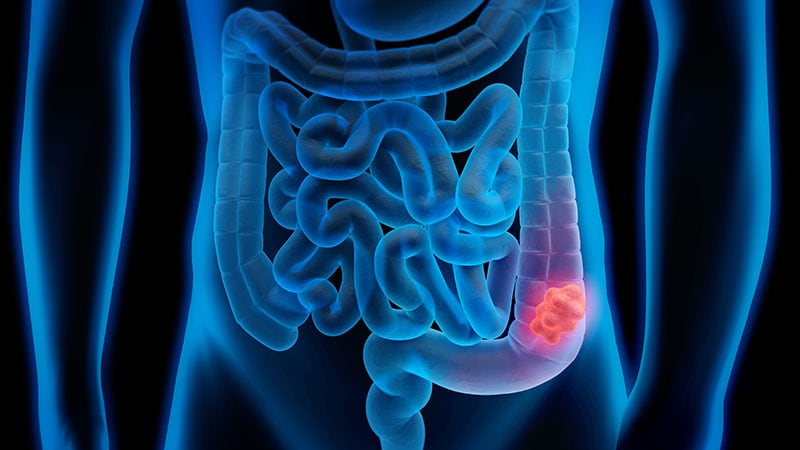These are the latest UK coronavirus stories you need to know.
Alert Level Lowered, Growth Rate Published
The UK's chief medical officers have agreed to a recommendation from the Joint Biosecurity Centre toreduce the alert levelfrom 4 (a COVID-19 epidemic is in general circulation, transmission is high or rising exponentially) to Level 3 (a COVID-19 epidemic is in general circulation).
In a statement the CMOs said: "There has been a steady decrease in cases we have seen in all four nations, and this continues. It does not mean that the pandemic is over. The virus is still in general circulation, and localised outbreaks are likely to occur.
"We have made progress against the virus thanks to the efforts of the public and we need the public to continue to follow the guidelines carefully to ensure this progress continues."
However, while the UK-wide picture improves, localised coronavirus outbreaks have been reported in Leicester and Cleckheaton in Yorkshire.
Ivan Browne, director of public health at Leicester City Council, said in a statement: "Although the overall numbers are relatively small, we are concerned that the number of cases of COVID-19 in Leicester is increasing.
"Leicester has high levels of health conditions such as diabetes, pockets of deprivation, and a very significant black, Asian and minority ethnic population – and we know that these factors combine to create a high-risk, more vulnerable, population that’s more susceptible to coronavirus."
A number of cases have been linked to the Kober meat factory in Cleckheaton. Kirklees Council's Director of Public Health, Rachel Spencer-Henshall, said: "We have been providing support and advice to both the management and employees in order to minimise any further transmission."
The UK'sR numberremains at 0.7-0.9.
R in Scotlandis between 0.6-0.8.
R in Walesis 'below 1'.
R in Northern Irelandis now 0.6-0.9.
R in England is 0.7-0.9
The UK growth rate is falling -4% to -2% per day. However, in London the rate is -5% to +1%.
The growth number will become a future key measure withSAGEindicating it will move away from publishing R numbers in future "as they become less informative".
The latestpreprint findings of the ISARIC 4C studyfrom the University of Edinburgh found that people with south Asian heritage in the UK are most likely to die of COVID-19, and diabetes is a key factor in worse outcomes.
The study used data from 260 hospitals across England, Scotland and Wales, and enrolled 34,986 patients to look at ethnic inequalities in critical care admission, comorbidities, the need for ventilation, and mortality.
The researchers write: "Ethnic minorities in hospital with COVID-19 were more likely to be admitted to critical care and receive IMV [intermittent mandatory ventilation] than whites, despite similar disease severity on admission, similar duration of symptoms, and being younger with fewer comorbidities. South Asians are at greater risk of dying, due at least in part to a higher prevalence of pre-existing diabetes."
Separate Office for National Statistics(ONS) data for Englandfrom 2nd March to 15th May found that after adjusting for region, population density, socio-demographic and household characteristics, the increased rate of death involving COVID-19 for people of black ethnic background of all ages together was 2.0 times greater for males and 1.4 times greater for females compared with those of white ethnic background.
Nick Stripe, head of life events, commented: "ONS analysis continues to show that people from a black ethnic background are at a greater risk of death involving COVID-19 than all other ethnic groups. The risk for black males has been more than three times higher than white males and nearly two and a half times higher for black females than white. Adjusting for socio-economic factors and geographical location partly explains the increased risk, but there remains twice the risk for Black males and around one and a half times for black females. Significant differences also remain for Bangladeshi, Pakistani and Indian men."
Meanwhile, higher rates of severe COVID-19 infections in BAME populations are not explained by socioeconomic or behavioral factors, cardiovascular disease risk, or byvitamin Dstatus, according to new research published in theJournal of Public Health. Study Supervisor, Steffen Petersen, professor of cardiovascular medicine at Queen Mary University of London, commented: "The results of this analysis suggest that factors which underlie ethnic differences in COVID-19 may not be easily captured. In addition to assessment of the role of biological considerations such as genetics, approaches which more comprehensively assess the complex economic and sociobehavioural differences should now be a priority."
ONS also produced data onreligions and COVID-19 mortality.The highest age-standardised mortality rates were among Muslims with 198.9 deaths per 100,000 males and 98.2 deaths per 100,000 females. ONS found those who identified as Jewish, Hindu or Sikh also had higher mortality rates than other groups.
After adjusting for region, population density, socio-demographic, and household characteristics,people with disabilitieshad a 2.4 times higher mortality risk for females and 1.9 times higher for males than non-disabled people.
All non-essential shops in Wales will be able to open from Monday if they can take all reasonable measures to comply with distancing rules.
Wales has also moved to amber in itstraffic light system.
The 'stay local' rules will be lifted on 6th July allowing people to travel to tourist attractions across Wales.
InScotland,people who are shielding can now take outdoor exercise, and can meet one other household in groups of no more than eight outdoors.
Non-shielding people living alone or with children can form an 'extended household group', a similar concept to England's social bubbles.
Shielding has been paused inNorthern Irelanddue to low community transmission, and social distancing in schools is being reduced to 1 metre from 2 metres as long as it is safe and appropriate.
Meanwhile, Boris Johnson has hinted at cutting the 2 metre social distancing rule, saying: "Watch this space." He's also said he is "sure" all children in England can be back at school full-time from September.
Data from theSAGEscientific advisory group from May 21st published on Friday said grandparents of primary-aged children remain at increased risk of severe COVID-19 outcomes, and that a substantial proportion of people in the high-risk age groups have one or more primary-aged grandchild. This risk is lower for most parents, with data showing 93% of parents of primary age children are in the lower-risk under 50 age group.
More ONS Data
The latest data from the ONSInfection Surveyin England suggests an average of 1 in 1700 people (33,000 people) in the community had COVID-19 at any given time between 31st May and 13th June.
ONS said the number of people in England testing positive has decreased since the study began on 26th April and modelling suggests that the decline may have slowed in recent weeks.
Since the study began, there were an estimated five new COVID-19 infections for every 10,000 individuals per week, equating to an estimated 26,900 new cases per week.
The latest data from antibody testing found 5.4% tested positive for antibodies to COVID-19.
Inother datafor Great Britain, 40% of adults reported that they had used face coverings outside of their home in the past week, an increase from 30% last week.
Twenty-one percent of adults with school age children reported that they had been asked to send their children back to school. Of these, 67% said that their children were now attending school some or all of the time.
Another 173 UK COVID-19 deaths were announced on Friday, taking the total to 42,461.
There were 169,600 tests counted yesterday. This figure includes home tests that have been sent out but not yet processed. This takes the total tests to 7,433,114.
Figures for the number of people tested were last given on 22nd May.
Another 1346 positive cases were reported on Friday taking the total UK confirmed cases to 301,815.
There were 494 people admitted to hospital in the UK (excluding Scotland), and 354 mechanical ventilator beds are in use by coronavirus patients.
There are 5030 people in hospital with COVID-19, down from 5608 a week ago.
More News in Brief
- Yesterday NHS Englanddropped its NHSX tracking appsaying it would be working on one using an Apple/Google-based system. However,the BBC reportedthat Apple didn't know about this hybrid approach. Apple also said it was "difficult to understand" claims by the NHS of problems with distance measuring using Bluetooth.
- UK researchers have identified a higher risk of death among COVID-19 patients with extremely high levels of the stress hormone cortisol in their blood. The observational study of 403 confirmed cases is published in theLancet Diabetes & Endocrinology.Study lead Professor Waljit Dhillo, Imperial College London and consultant endocrinologist, Imperial College Healthcare NHS Trust, said in a news release: "Now when people arrive at hospital, we potentially have another simple marker to use alongside oxygen saturation levels to help us identify which patients need to be admitted immediately, and which may not. Having an early indicator of which patients may deteriorate more quickly will help us with providing the best level of care as quickly as possible, as well as helping manage the pressure on the NHS. In addition, we can also take cortisol levels into account when we are working out how best to treat our patients."
- COVID-19 was present in Milan and Turin in December before the first Italian cases were confirmed in February. The findings come in a study of waste water samples. However, Giuseppina La Rosa from the country'sNational Institute of Health(ISS) said: "It should be noted that the discovery of the virus does not automatically imply that the main transmission chains that led to the development of the epidemic in our country originated from these first cases."
- The National Institute for Health and Care Excellence (NICE) and the National Institute for Health Research (NIHR) have launcheda best practice guide on clinical evidence generationfor developers of medicinal products for COVID-19. Professor Hywel Williams, NIHR, commented: "The COVID-19 pandemic has required researchers to radically alter the pace of their work. In the rush to produce something, there is a temptation to discard some of the basic principles of good study design which will limit the usefulness of the research. For example, using core outcome measures for trials will help in pooling similar studies together in order to make better sense of the totality of evidence."
- Open Prescribingdata for England show a big spike in GPmidazolamhydrochloride prescriptions under COVID-19. In April prescriptions rose to 38,528 from 21,310 in March. Dr Ben Goldacre from Oxford's EBM DataLab that produced the figurestweeted:"That's good doctors doing good end of life care, in hard circumstances. On a vast scale."
- A hundred days into the pandemic, the Royal College of Nursing is asking the UK governments to"care for those who have been caring".It sets out its priorities, including risk assessments for BAME staff, and a supportive and considered approach to health workers' mental health. Chief Executive and General Secretary, Dame Donna Kinnair, commented: "The weekly clapping may have stopped, but the practical measures needed to fully support our health care staff are only just beginning."
- Could being tested for COVID-19 affect doctors applying for life insurance and income protection policies? No, said theAssociation of British Insurers(ABI) and BMA in a statement: "Having discussed the issue in detail, the BMA and ABI are clear that there should be no detriment to health care workers and no one should be discouraged from having a test. Each application for life insurance and income protection will be assessed on an individual basis, regardless of profession, and focussed on the person’s health and severity of any symptoms at the time. A positive test for COVID (either a PCR or antibody test) should not delay an application as long as the individual has recovered and been back at work for the required period."


